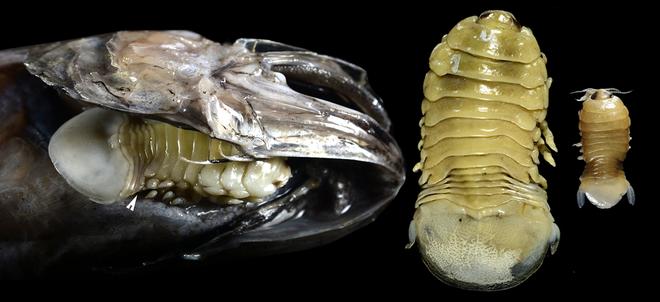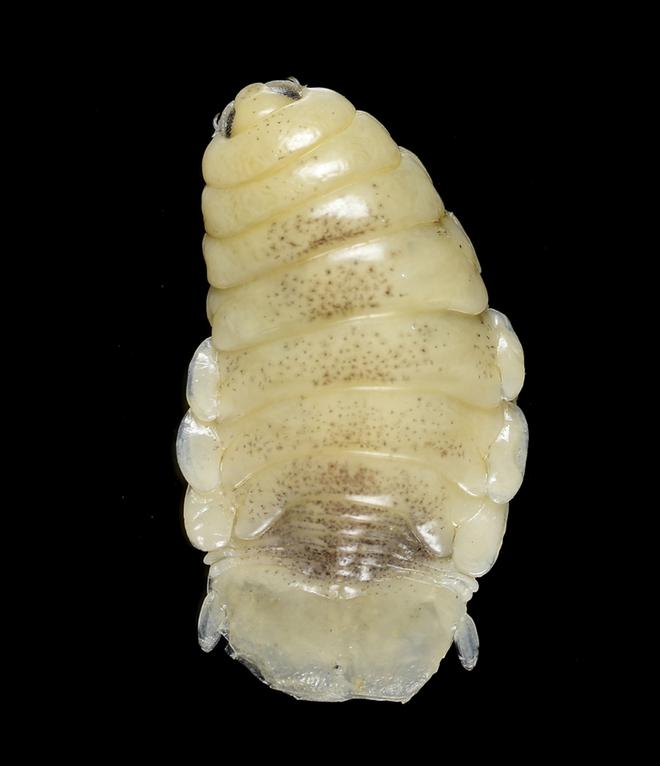An ongoing study on deep-sea crustaceans off the Indian coast has led to the discoveries of a previously unknown family, two new genera, and four new species of millimetre-sized crustacean parasites that infest fishes and other marine life forms.
The Department of Aquatic Biology and Fisheries, University of Kerala, which is performing the biodiversity study in collaboration with the Lee Kong Chian Natural History Museum, National University of Singapore, described the discoveries as “groundbreaking.”
Researchers have named the new family Uranoscopicolaidae, as this parasitic copepod was found to live off the Dollfus’ Stargazer (Uranoscopus guttatus), a fish dwelling in depths ranging from 300-550 m off the southwest Indian coast. This is also the first discovery and description of a new crustacean family from India, they said.
The journal Natural History has published a paper on the finding authored by team leader Aneesh P.T., Hiroshima University; A. . Helna, Regional Forensic Science Laboratory, Kannur; B.A.V. Maran, Nagasaki University, Japan; and A. Biju Kumar, project leader and Head, Department of Aquatic Biology and Fisheries, University of Kerala.
Off Colachel
The discovery of the new family Uranoscopicolaidae has also led to the creation of a new genus and species, Hirodai ohstukai, under it. The genus name ‘Hirodai’ honours the Hiroshima University while the species is named ‘ohtsuka’ after Susumu Ohtsuka, noted marine biologist and expert on copepods at the Graduate School of Integrated Sciences for Life, Hiroshima University, Japan. Found off Colachel, Tamil Nadu, these “parasitic copepods are known to infest a wide range of hosts, from sponges to marine mammals; among them, fishes are the most likely potential host,” the paper noted. The females of the species, about five to six mm in length, are larger than the males.
“This discovery highlights the critical role of previously understudied deep-sea crustaceans in shaping marine biodiversity and ecological dynamics,” Dr. Aneesh was quoted in a statement. “The deep sea biodiversity studies are challenging and interesting as they reveal a new world of associations in the unknown marine habitats and enrich our knowledge of the marine food web,” Dr. Biju Kumar said.
The team also discovered a new genus and isopod species which has been named Glyptothoa sagara; ‘Glypto’ as the fish parasite was found in the deep sea fish Glyptophidium macropus, and ‘sagara’ for ocean. The finding has been detailed in the international journal Zoological Studies.

Another new isopod crustacean parasite species, named Elthusa aquabio, was collected from an unknown fish. Dr. Aneesh, who headed the study, named the species ‘aquabio,’ honouring the contributions made by the Department of Aquatic Biology and Fisheries, Kerala University, in taxonomic research, especially on parasitic crustaceans.

The fourth new species is a 11-12 mm “flesh-penetrating parasitic copepod,” which has been christened Cardiodectes vampire, after the mythical creature which feeds on the blood of the living. The species, which has a “translucent red colour,” according to a paper on its discovery in the journal Zootaxa, was found to infest the deep-sea fish Chlorophthalmus corniger. Its samples were collected from trawlers working off Neendakara, Kollam.







